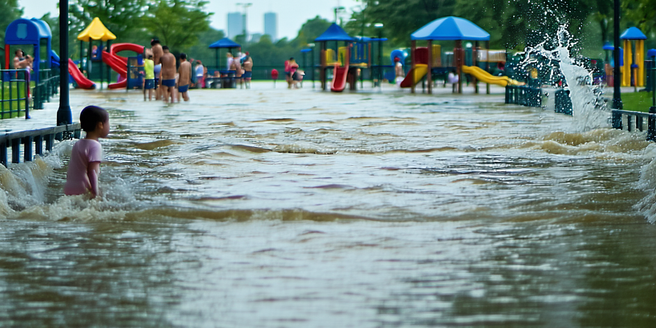
Understanding Flash Floods
Flash floods can occur with little to no warning and result from intense storms or the sudden release of water. Understanding the dynamics of flash floods is crucial to preparedness. Unlike regular floods, flash floods can rise rapidly and consume areas within minutes, leaving individuals little time to react. The unpredictability of such events makes them particularly dangerous, emphasizing the need for awareness and readiness. Key factors contributing to flash floods include saturated soil levels and limited drainage in urban environments. By recognizing these risk factors, you can better anticipate the potential for flooding in your area. Communities prone to flash floods need to invest in education and awareness campaigns to ensure that all individuals understand the nature of these abrupt disasters and the necessary precautions to take when they occur.
Recognizing Warning Signs
Recognizing the warning signs of an imminent flash flood can be life-saving. Often, these signs are subtle and easily dismissed, but understanding them can make all the difference. Look for heavy rain or unusual weather patterns that could suggest an exaggerated amount of rainfall. Changes in water levels in nearby streams or riverbanks, even slight, indicate potential danger. Additionally, observe any accumulation of debris or unusual noise from water channels suggesting rapid flow changes. Meteorologists issue flash flood watches and warnings; heed these alerts seriously. If you live in an area that often experiences flash floods, maintaining awareness of your surroundings and understanding natural and man-made indicators is essential. Early recognition is critical to safely executing your emergency plan in response to escalating conditions.
Essential Gear and Supplies
When preparing for the possibility of a flash flood, having essential gear and supplies can be crucial for survival and comfort. Start with practical clothing, including waterproof jackets and sturdy boots, which will serve you well should you need to move through rain-soaked terrain. A fully stocked first-aid kit is vital, as injuries are common in severe weather events. Ensure you have a reliable flashlight, extra batteries, and a battery-operated or hand-crank emergency radio. These items will help you stay informed about the evolving situation and provide necessary light if the power goes out. Non-perishable food items and clean drinking water will keep you nourished during unanticipated isolation caused by flooding. Pack these items in a waterproof backpack and store it in an easily accessible place, ensuring readiness at all times.
Creating an Evacuation Route
Creating an efficient evacuation route is vital in ensuring safety during a flash flood. It’s essential to designate multiple routes to higher ground, avoiding bridges or roads commonly impacted by floodwaters. Familiarize yourself with community evacuation plans and local topography to understand potential risks and safe exits. Share your route with family members and practice regular emergency drills to ensure everyone knows what to do when an evacuation is necessary. Additionally, communicate with neighbors, especially those who may need assistance, to coordinate plan implementation. In highly dangerous situations where evacuation becomes inevitable, predetermined routes are lessening panic and confusion. Continuously assess and adapt routes based on current conditions and closure announcements from local authorities. Overall, having an actionable evacuation plan can be lifesaving.
Safety Measures During a Flood
During a flash flood, adhering to safety measures is paramount. The foremost rule is never to walk or drive through flooded areas since water can quickly overwhelm the stability of the ground, making it treacherous. Even six inches of water can knock over an adult, and just two feet can carry away most vehicles. Stay informed using a battery-powered radio to receive updates on flood progression and emergency protocols. If directed to evacuate, do so promptly. When trapped in a building, move to higher floors or rooftops as necessary, utilizing ladders or other high points for visibility and signaling rescuers. Keeping communication devices charged and accessible ensures that you can reach out for help if needed. These real-time adaptations can significantly mitigate the dangers presented by rapid flooding developments.
Recovery After a Flash Flood
Recovery after a flash flood can be challenging but manageable with preparation. Safety remains a priority—avoid returning to severely affected areas until authorities give the all clear and any structural dangers are assessed. Document damages for insurance purposes by taking photographs. Utilize relief agencies offering shelter and recovery assistance. When safe, begin cleaning and repairing damages promptly to prevent mold growth and further degradation. Clear debris methodically, focusing on essential facilities first. Drinking and using contaminated water supply lines remain hazardous; ensure water purity. Connect with community support systems to obtain necessary resources and emotional support. Prioritize mental health alongside physical recovery by accessing professional help if flash floods’ traumatic impacts linger. Proactive participation in recovery efforts will ease the transition back to normalcy.
